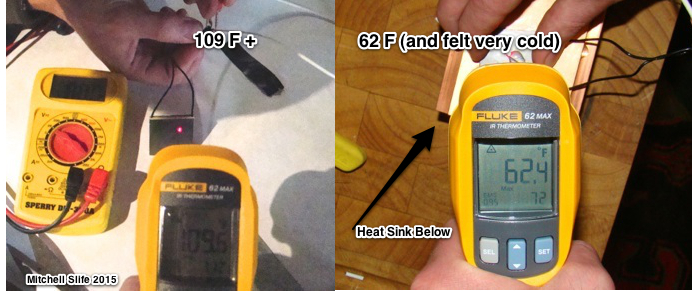Background
Jean Peltier is credited with finding the corollary of the Seebeck effect: current carries heat. Peltier observed that current passing through a bimetallic circuit would cool at one junction and heat at the other. If he were to reverse the direction of current the hot and cold would evolve at opposing junctions.
Following Seebeck's example, Peltier organized various metallic conductors by their ability to carry heat per unit current- the Peltier coefficient Π (Watts/Amp). Lord Kelvin (William Thomson) was able to tie all of this together relating Peltier's coefficient to Seebeck's coefficient with the elegantly simple: TS=Π where S is the Seebeck coefficient (Volts/Kelvin) and T is the absolute temperature of the junction.
Bound by Carnot
The physical requirements that allow heat transfer to be converted to power are the same as those that allow power to be used to transfer heat. A Peltier element used in a cooling application is the SAME hardware used as a TEG in a power generation application.Fundamentally, a TEG or Peltier cooler is merely a resistor element in a circuit- and behaves exactly like one when freely suspended (below left). The temperature seen is a product of resistance heating- I2R. When suspended in this manner the Peltier cooler is alot like a refrigerator with its door left open.

Without a hot and cold reservoir there can be no useful heat transfer, and that is because the thermoelectric effect abides by the same principles of a heat engine. This means that the absolute efficiency attainable by a TEG or Peltier cooler is defined by the Carnot efficiency. The ideal efficiency of any thermoelectric device is defined by the absolute temperature difference.

Peltier coolers dont rely on a hot cold reservoir in the same way that refrigerators or air conditioners do. They instead use the high thermal conductivities of metals like copper or aluminum in a heat sink (above) to convey heat away by conduction and convection. By improving the design of the sink there exists another way to increase the efficiency of the process.